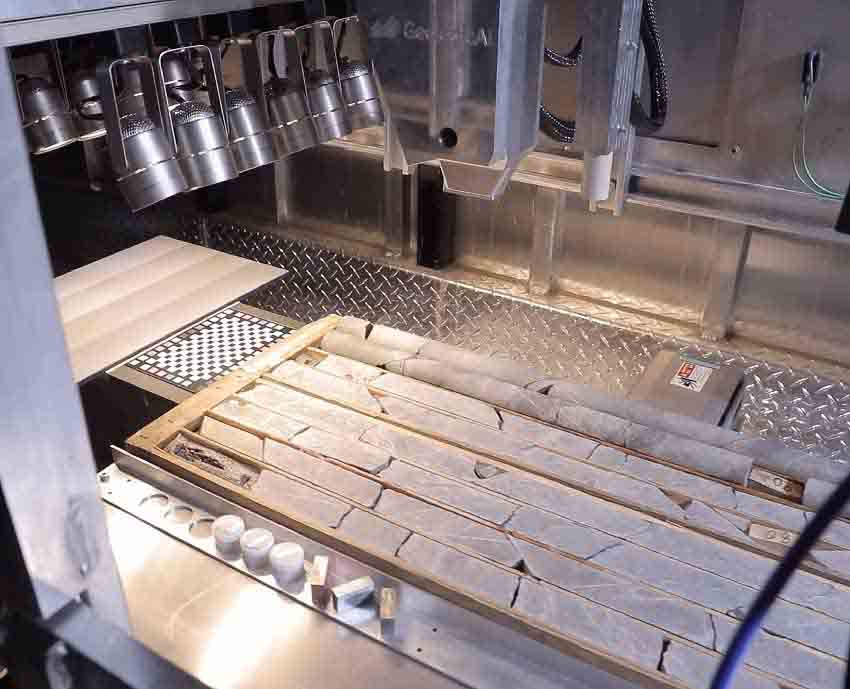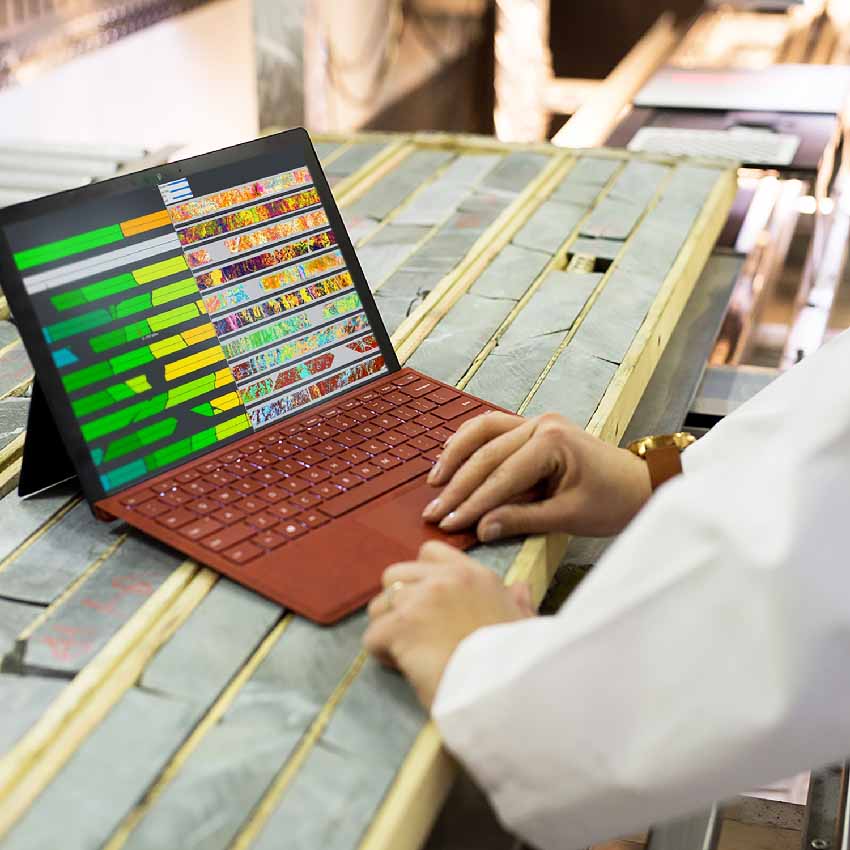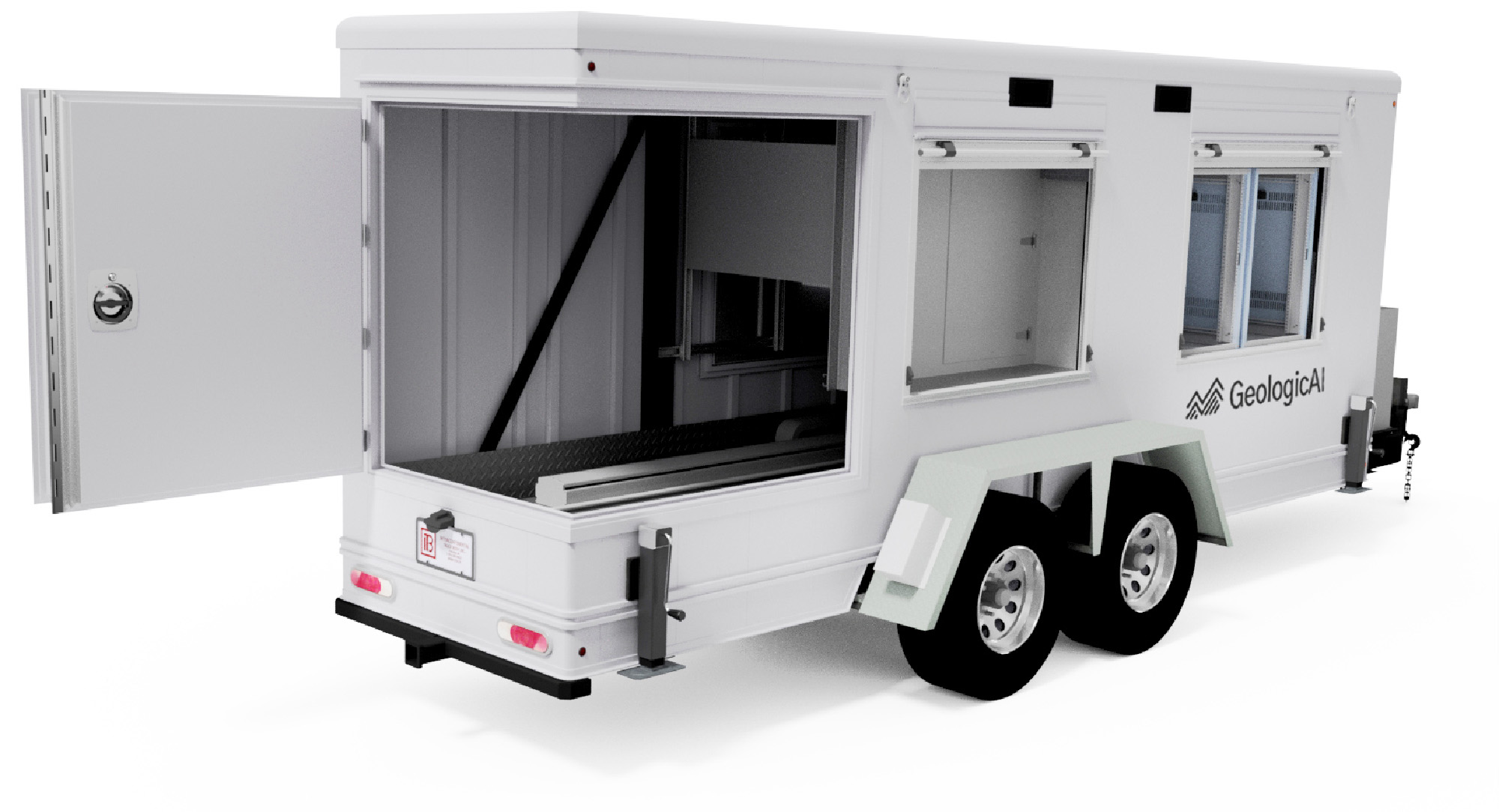GeologicAI is a multi-sensor AI based core-logging solution that provides consistency to a historically inconsistent industry. To simply put it, they build robot geologists that help digitize the core logging process.
When the company started, GeologicAI quickly realized the power of utilizing muti-sensor information to provide a holistic solution. So, they combined a fleet of sensors and scanners which are housed in a robust trailer that lives on site for any project, anywhere. Sensor data is correlated and run through algorithms which provide automated results such as AI generated lithology, automated RQD, mineralization, and so much more.
Geologists can view, log, and export their data from the Digital Core Table almost instantly. GeologicAI is removing the errors and variability often seen in traditional logging procedures and manual entry and giving geologists the chance to truly interpret what is happening in their deposit.
Interview with David Henderson, President of GeologicAI.
Easy Engineering: What are the main areas of activity of the company?
David Henderson: GeologicAI is a data supplier. Our goal is to take this muti-sensor data, correlate, automate and digitize it into a useable format. We provide core scanning results which gives mining companies a clear vision of what their deposits hold.
We stand out in the industry because we combine the results of multiple scanners and sensors, providing a supervised AI-generated dataset that offers insights far beyond the power of the human eye.

This is executed in a time-efficient manner and allows geologists to focus on interpreting results, instead of documenting them. Our tools are used at any stage of the mining process from exploration to production, offering geologists the ability to learn from historic core and applying their findings to new core.
E.E: What’s the news about new products?
D.H: Along with the self-learning nature of AI, GeologicAI is constantly refining and building its hardware and software to offer a comprehensive solution of logging tools.
Our solution uses a mix of state-of-the-art materials, sensors and robots both developed in-house and supplied from industry leaders. We combine data from 6 different sensors including XRF, hyperspectral (SWIR and VNIR), magnetic susceptibility, laser profiling, and RGB imagery for our unique results. As we continue to innovate, the introduction of things like LIBS, long-wave, and mid-wave infrared will provide an even more comprehensive interpretation of any core sample.
Like our hardware, our software is continuously evolving. Data is viewed on the Digital Core Table which is comprised of all the logging tools a geologist would need. Tools such as AI-based auto-logging, automated RQD measurements, mineral maps, alteration zones, and more, that can be customized and structured as required. Data can be easily integrated into databases and visualization programs for further interpretation.
The Digital Core Table not only provides a logging solution, but it generates a digital reference library for a site’s new and historic core. This database allows geologists to reference core as it was scanned, and easily reference historic data for a complete picture of what’s happening below the surface. Future logging tools include discontinuity identification such as vein detections and structural orientation measurements. All of this data can be valuable in ways we are just starting to understand — this is an entirely new way of looking at core and understanding the bigger picture.
E.E: What are the ranges of products?
D.H: Our products bridge the gap between hardware and software. Our scanners supply data to our software that, along with artificial intelligence, interpret core sample results to give a more in-depth dataset of ore bodies.
Based on the project requirements, GeologicAI has a variety of hardware and software configurations to meet a site’s needs. The scanners vary in size and weight and can be transported by road, ship, or air. Heli-holds and removeable chassis are available on all units. Depending on a project’s requirements, sensors can be configured as needed. The available sensors include XRF; hyperspectral (SWIR and VNIR); hi-resolution cameras; magnetic susceptibility; and laser profiling.
E.E: At what stage is the market where you are currently active?
D.H: GeologicAI started in the oil and gas industry and has branched into the mining industry. Our scanners can be used at virtually any stage of a project from exploration to production and even historic/educational repositories. We provide quick results that help any geologist see a unique view of their entire deposit.
GeologicAI is a global company with active scanners in North America and Latin America. Throughout 2023 we will be branching into Central America and Europe, with continuous expansion into Oceania, Africa, and the Middle East.

E.E: What can you tell us about market trends?
D.H: In an industry that has not previous embraced technology quickly, we have discovered that the majority of geologists and prospectors see our innovations as groundbreaking — and understand that these evolving technologies will become standardized tools on any mine site. As the need for critical minerals hits record highs, and deposits continue to increase in complexity, the need to quality data has been expedited. This drive for innovation is coupled with a dwindling work-force which means the focus on efficiencies and keeping workers safe is top of mind industry-wide.
The digitization of core scanning is inevitable. It is simply a tool that hasn’t been available up until now. Technological innovations and the rapid evolution of artificial intelligence have offered opportunities that will change the way the mining industry interprets core samples and GeologicAI is at the forefront of these developments.
E.E: What are the most innovative products marketed?
D.H: The AI-Auto Logger is making huge waves in the industry as one of most innovative tools for geologists,” says Henderson. “It is sure to become industry-standard in the very near future. By embracing artificial intelligence, we created a tool that allows geologists to focus on analyzing results, rather than the painstaking task of data entry and compilation. The more the sensors scan, the more the AI-Auto-Logger learns, creating a product that constantly improves. It’s a game changer.
E.E: What estimations do you have for 2023?
D.H: Technology will continue to be developed and embraced throughout the industry. In terms of core scanning and logging, the move towards digitization to allow geologists to provide more thorough interpretations of deposits is inevitable. The technology is faster, efficient and cost-effective, eliminating manual data entry as well as keeping a permanent record of historic core that can be referenced easily from anywhere around the world on our Digital Core Table.

